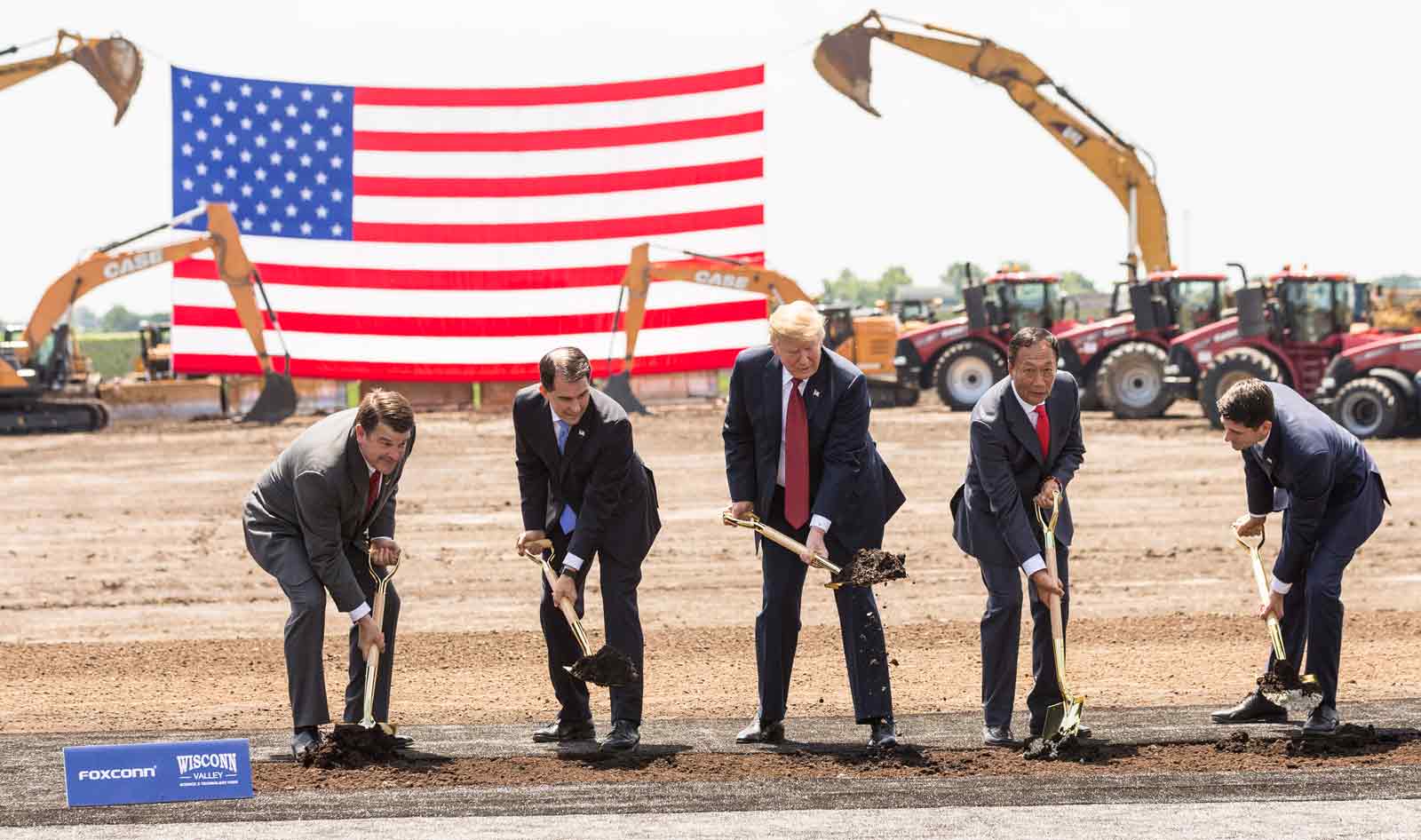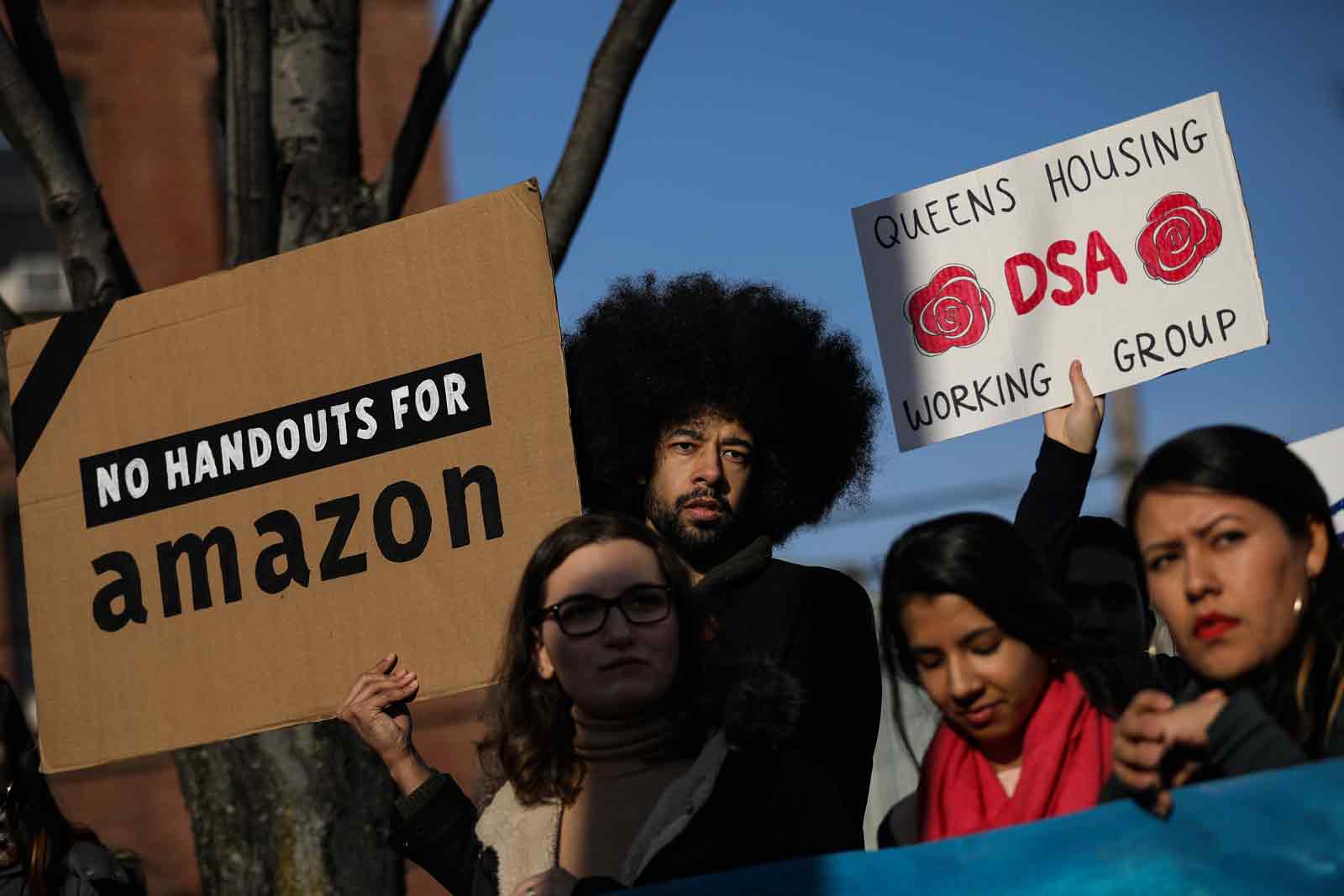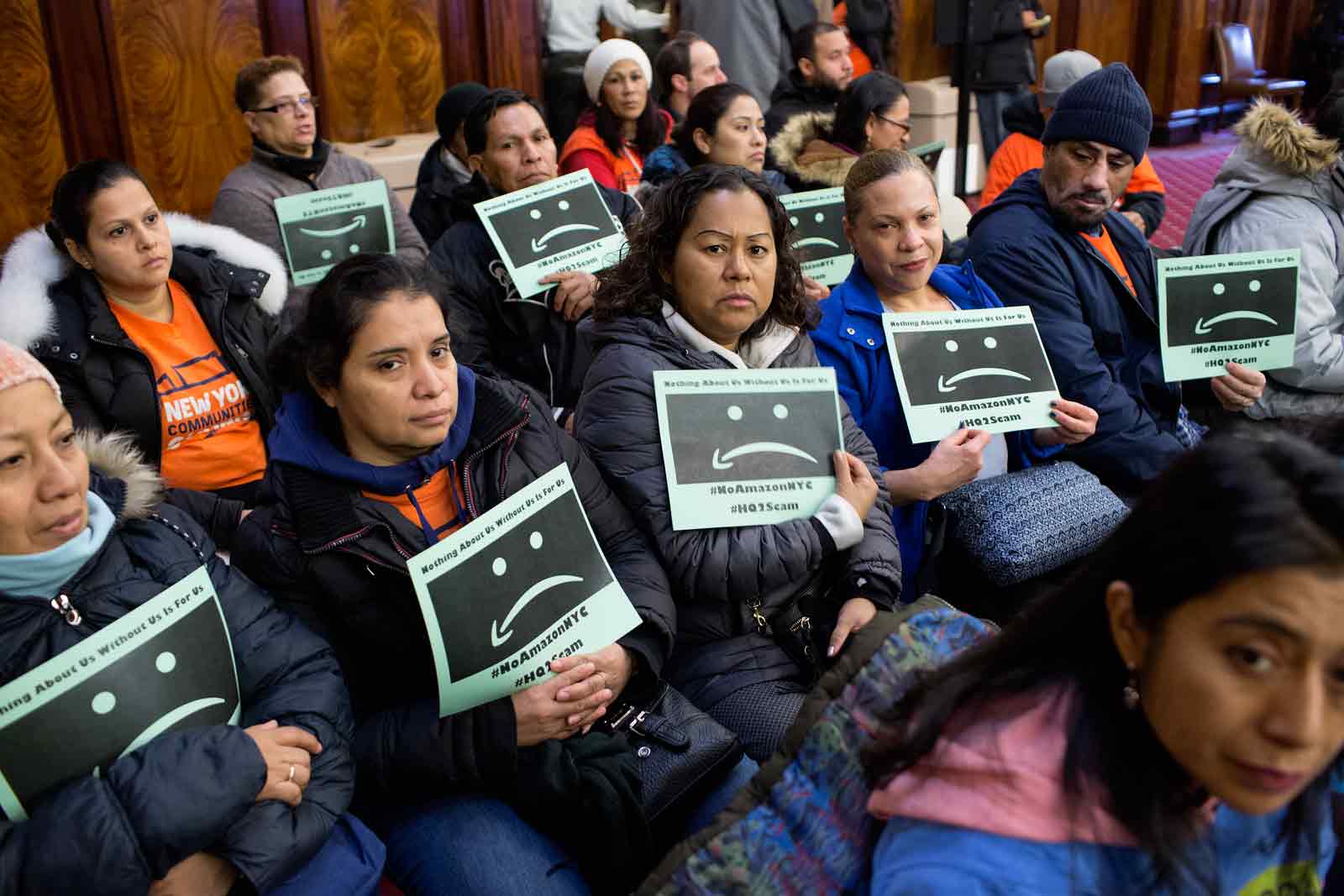A few years ago, Nick Buchheit, a maintenance technician in southeast Wisconsin, started to notice a disturbing pattern. After working five years or so at a manufacturing plant, he’d reach what seemed to be a wage ceiling, around $25 per hour, and get laid off. It happened once, then twice: he arrived at a factory, learned the shape and rhythm of the machines, and designed a maintenance program to make things easier for everyone else. But once “everything’s already set up,” Buchheit told me, “they go back to the $18-an-hour guy.”
He had found factory work soon out of high school, in Janesville, a city that has come to symbolize post-industrial decline. In 2017, with a wife and two children to support, he realized, “I can’t go further without having a degree.” That year, Buchheit enrolled in a local community college, squeezing classes around his job at an injection-molded plastics company. It was around this time that Buchheit’s corner of the state began to get international attention.
Taiwan-based Foxconn, the world’s largest maker of electronics components, had selected Milwaukee as its North American headquarters and Racine County as the site for its first American plant, an LCD television-screen factory that would, as the Journal Sentinel reported, eventually “create thousands of jobs.” In exchange, Foxconn would receive the largest corporate-incentives package for a foreign company in US history—between $219,000 to half a million dollars for every position created, according to the independent research group the Wisconsin Budget Project.
It was an odd choice for a cutting-edge campus, and an extraordinary gamble. Though manufacturing still exists in the area, it tends to be low-tech, and the job market is tight: just 3 percent of the local population is unemployed. It wasn’t unusual to offer tax breaks to a major employer, but the Foxconn package was so big that special legislation was required (though the Republican-controlled legislature had no trouble passing the bill). Many Wisconsinites, however, were furious: there had been no public debate about such a generous handout. Meanwhile, local schools and state universities were suffering from years of budget cuts, and inner-city communities had been hit by rising levels of incarceration and long-term unemployment not reflected in labor statistics.
Then, in 2018, the controversy over corporate mega-deals went national. Amazon announced that it would build new secondary headquarters (“HQ2”), in Long Island City, New York, and Crystal City, Virginia, with the help of tax incentives, outright gifts, and environmental and land-use exemptions. New Yorkers rebelled, protesting the size of the deal and its lack of democratic process, as well as Amazon’s hostility to union organization. To everyone’s shock, Amazon responded last month by cancelling its plans for New York.
All this has started a national conversation about corporate subsidies, at a moment of broader reevaluation of our welfare state, climate policy, wealth distribution, and government accountability. Rules-based incentives for small and medium-sized enterprises are one thing; rubber-stamped agreements with trillion-dollar companies are another. Could the divergent paths of the Amazon and Foxconn projects mark an inflection point in the nation’s approach to economic development?
*
When Buchheit heard that Foxconn was coming to Wisconsin, he thrilled at the prospect of a twenty-first-century job, even as he felt unsettled by “the history behind it, all of the priors,” he said, meaning the company’s false starts and questionable practices. Foxconn had solicited inducements not only from Racine County but from cities across the US, a strategy it honed in the 1980s in China, where it later became synonymous with the suicides of migrant workers at its megalopolitan factories. The state of Wisconsin, Racine County, and the Village of Mount Pleasant, where Foxconn’s 20-million-square-foot facility is slated to open in 2020, offered tax credits and eminent-domain-seized land, plus air-pollution exemptions and permission to drain millions of gallons of water per day from Lake Michigan. Foxconn, in return, vowed to hire 13,000 workers for both blue- and white-collar positions and invest $10 billion in the area, through the purchase of “goods and services.”
Skeptics saw the project as a $4 billion giveaway, disastrous for taxpayers, local residents, and the environment, and unlikely to create the promised number of jobs. In 2013, Foxconn had said it would build a high-tech factory in Harrisburg, Pennsylvania, then failed to deliver. But to hopeful Wisconsinites, Foxconn seemed to be an angel sent to resurrect American manufacturing and return prosperity to a beleaguered working class. It would bring the kind of industrial renaissance Trump had campaigned on in 2016—proclaiming that he had “saved” the Carrier air-conditioner factory in Indiana, Mike Pence’s home state, from moving to Mexico. (The Carrier facility has since laid off nearly 500 workers.)
Advertisement

Andy Manis/Getty Images
Christopher “Tank” Murdock, the first Wisconsin Foxconn employee; then Wisconsin Governor Scott Walker; US President Donald Trump; Foxconn CEO Terry Gou; and then House Speaker Paul Ryan breaking ground at a ceremony for the Foxconn Technology Group plant, Mount Pleasant, Wisconsin, June 28, 2018
Last June, in Mount Pleasant, President Trump and Foxconn’s billionaire chairman, Terry Gou, joined Governor Scott Walker and House Speaker Paul Ryan (both of whom have since left office) in a ceremonial ground-breaking, using gilded shovels. Yet within a few months, the Foxconn deal, already showing cracks, came apart. Of the 13,000 promised jobs, a meager 10 percent would be for factory workers; the rest would go mostly to engineers. And despite a series of hyped career fairs and job postings, the company hired only 178 people in 2018, missing its first-year target by a third. As Bloomberg Businessweek found, many of these workers were interns earning only $14 per hour, an uncomfortable echo of Foxconn labor practices in China.
In late January, Louis Woo, special assistant to Gou, told Reuters that there would be no Wisconsin factory at all, because, “In terms of TV, we have no place in the US,” he said. “We can’t compete.” The next day, reportedly at Trump’s urging, Woo reversed course, and Foxconn stated that its initial plan was still on track.
With the Wisconsin deal continuing to draw skepticism, Amazon’s proposed HQ2 plan in Long Island City became the most hyped and hotly contested subsidy program in the country. In 2017, Amazon, like Foxconn, had solicited bids from all over the US and Canada, in search of the best combination of tax rebates, land grants, and worker-friendly infrastructure like mass transit and housing. In New York, Mayor Bill de Blasio and his nemesis-turned-ally on this issue, Governor Andrew Cuomo, bypassed local politicians and skipped community consultation to offer Jeff Bezos, the richest man in the world, a $3 billion incentives package, plus exemptions from zoning and environmental-review processes. There would be a total of 25,000 jobs, with a purported average salary of $150,000.
When residents and activists were finally let in on all the details, in December, they organized a noisy opposition campaign. New York’s mass transit system and schools were already under strain, and then there was the question of values. New York is an immigrant-friendly, pro-union town: Why subsidize a company that does business with ICE and busts worker-organizing? In addition, the deal contained no provision for local hiring; nor was there a strategy to prevent the displacement that would surely result from a sudden influx of high-earners.
Seattle, Amazon’s hometown, was a cautionary tale: there, the company has long attracted criticism for causing gentrification and avoiding taxes—it paid zero federal taxes on profits of $11.2 billion in 2018. Last spring, Amazon threatened to stop construction on a new tower, unless the Seattle City Council repealed a tax on large corporations. Then, in late February, having won the repeal, Amazon stopped construction anyway. Bezos wants to eat the carrot and wield the stick.
On Valentine’s Day, following weeks of meetings with community groups, labor unions, and city councilmembers, Amazon gave up on its HQ2 in Long Island City. Amazon’s unexpected exit from New York and the embarrassment of Foxconn in Wisconsin led The New Yorker’s Sheelah Kolhatkar to ask whether “the end of corporate subsidies” is near. Corporate welfare in exchange for promised jobs is a tried-and-trusted model of economic development; the Subsidy Tracker managed by the advocacy group Good Jobs First lists 1,039 subsidy programs behind a total of 629,000 awards nationwide.
According to Timothy Bartik, though, an economist at the W.E. Upjohn Institute in Michigan, these big-ticket incentives packages only became common practice in the 1990s. Research by Bartik and others has shown that tax rebates and land grants seldom pay off. In a paper he authored last summer, he found that incentives were decisive in “tipping a location, expansion, or job retention decision toward that state or local area” in only 2–25 percent of the cases examined. “In the other 75 percent to 98 percent of the time, the same decision would have been made without the incentive.”
Proponents of subsidies note that most deals are structured to claw back benefits from companies like Foxconn and Amazon if intermediate goals—in hiring or construction, say—are not met. When advocacy groups in New York suggested, after Amazon’s retreat, that the $3 billion could now be spent on public services, the New York Times columnist Andrew Ross Sorkin responded with a tweet about a crisis in “financial literacy”: “Quick lesson: NYC wasn’t handing cash to Amazon. It was an incentive program based on job creation, producing tax revenue. There isn’t a $3 billion pile of money that can now be spent on subways or education.” Similarly, when I pressed the Wisconsin Economic Development Corporation and the County of Racine about Foxconn’s failure to meet its hiring goals, both agencies replied with a shrug: the company would be ineligible for subsidies through at least 2020—and that would change only when it met the agreed targets.
Advertisement
The billions of dollars to be rebated over time may not be piled in a cartoon safe, but they are nevertheless real public funds. “It depends on what you think Amazon’s fiscal impact would’ve been,” Bartik explains. If similar jobs might have been created anyway, and the strain on public education, transportation, and other services is significant, then, “there’s no fiscal benefit. In that case, the $3 billion actually is a cost.” In addition, both the Amazon and Foxconn arrangements required significant public spending up front: New York promised Amazon as much as $505 million as a cash grant, and Wisconsin and Racine County have budgeted $262 million to upgrade the roads leading to the Mount Pleasant campus.
Corporate welfare of this sort feels peculiarly American, fueled by economic competition between states. It is true that in the European Union, corporate enticements risk running foul of tough competition rules, but there are significant exceptions—such as for high-tech businesses and economically depressed localities—that would apply to companies like Amazon or regions like southeastern Wisconsin. In some cases, the EU provides regional subsidies directly. China has also become practiced in the art of the lure. The city of Zhengzhou spent more than $1.5 billion on factory construction, roads, power plants, and transportation costs, and even bonuses to persuade Foxconn to locate the world’s largest iPhone factory there.
Incentives packages, in auction-ready form, are generally undemocratic, and this lack of accountability, the failure to seek public input, is what ultimately doomed Amazon’s headquarters in New York. Though the city has a rich tradition of activism, the coalition that mobilized against Bezos was not readymade. Daisy Chung, a lifelong New Yorker and deputy director of ALIGN, an alliance of labor and environmental justice groups, described a sleepless sprint of cold calls and door-knocking in the Queensbridge Houses, the country’s largest public-housing complex, located less than a mile north of the proposed Amazon complex in Long Island City. “It’s the quickest rapid response I’ve ever done in my life,” Chung told me. “Seventy group representatives were in a room two days before Thanksgiving.”
Amazon cited the political opposition in its terse statement explaining why it withdrew from New York, but the company’s unwillingness to negotiate with labor unions is widely seen as the main stumbling block.
The lesson of Amazon HQ2 may be that, in the case of corporate mega-deals, it is too risky not to include the public early on. Ellen Harpel, an economist at the advisory group Smart Incentives, supported Amazon’s entry into New York, but acknowledged that Governor Cuomo and Mayor de Blasio failed to combat “the perception that economic development is about cutting deals with businesses for the benefit of the business.” Compared to the Foxconn agreement, Harpel told me, Amazon’s was admirably transparent, but the choice of local leaders to circumvent the City Council, State Assembly, and community members “backfired spectacularly,” she wrote in a recent blogpost. “Instead of accelerating project approvals, this choice practically guaranteed a fight to make additional voices heard.” She emphasized that there are rules governing the disbursement of subsidies in every state, and that it’s incumbent on the public and their political representatives to make sure those rules are followed.
Intervention could take many forms. The tripartite model of the European Union, in which representatives of government, business, and labor unions meet to negotiate terms on new plants, suggests a better framework. In South Korea, a new government initiative will support subsidy deals in regions suffering deindustrialization; workers employed in the resulting plants will earn only half as much as their unionized counterparts, but work fewer hours and receive housing, medical, and education benefits. (Trade unions oppose the strategy.) The nearest American analogy might be the community benefits agreement, a contract in which unions, civil-rights groups, and environmental organizations, for instance, agree to support a developer’s land-use application in exchange for certain guarantees. In the past, community benefits agreements have included provisions for local and minority hiring, union labor, environmentally sound construction, affordable-housing allotments, and greenspace.
*
Wisconsin’s deal with Foxconn didn’t involve this kind of consultation. The parties to the deal only brought in members of the community after the fact—as, in effect, public-relations representatives. This dynamic was especially visible in Foxconn’s interactions with post-secondary education institutions. The University of Wisconsin at Madison, the state’s leading four-year college, published a study, using data produced for Foxconn by EY (the accounting firm formerly known as Ernst & Young), that applied an extremely optimistic “multiplier effect” to find that the 13,000 positions brought in by Foxconn would add a total of nearly 40,000 additional jobs to the Wisconsin economy. UW–Madison happens to be the future site of the Foxconn Institute for Research in Science & Technology, thanks to a $100 million “co-investment” pledge.
Gateway Technical College, a public vocational school not far from the future LCD factory, has become a vital ally and photogenic backdrop for Foxconn. The college’s iMet Center, a training facility modeled on a high-tech factory floor, received $5 million in state funds as part of the Foxconn incentives package. iMet has since hosted a number of Foxconn press conferences, job fairs, and information sessions for prospective contractors and suppliers. Yet just two Gateway students are currently interning with Foxconn at a provisional Wisconsin factory, earning $14 per hour to assemble Sharp-brand TVs.
A new degree program at Gateway in advanced manufacturing was specifically designed to prepare young workers for the Foxconn factory. At the moment, though, only a small number of students are enrolled. Nick Buchheit, the maintenance technician, attends classes there. His teacher is Tony Lestan, a veteran manufacturing expert who spent “the first part of my career developing tooling, then taking it to Mexico or China,” he told me. “In 2010, I was able to go back to China and bring that line home to Wisconsin. Ever since then, there’s been nothing but stories of reshoring.”
As I interviewed Lestan, Buchheit, and other students and administrators at Gateway, I was at once moved and troubled by their optimism. It is natural to hope for progress and prosperity, especially in the wake of factory closures and deindustrialization. And economic development—in the unglamorous day-to-day decision-making of local planners and economists—is as much an act of faith as social science. But there is little evidence that Foxconn, even if it does a fraction of what it has promised, will create jobs, let alone good ones at family-sustaining wages.
What if, on the front end of corporate subsidies, before the ink is dry, the workers and residents on whose behalf these deals are ostensibly made had a chance to weigh in? More transparency from the outset would enable citizens to test the strength of economic-impact analyses, examine a company’s track record, and query elected officials about future impacts on land, water, housing costs, and social services. This opportunity is what the opponents of Amazon HQ2, in New York, were refused. The success of their resistance will not lead to the end of corporate subsidies, but it has pointed to, and may help cure, a larger democratic deficit.




